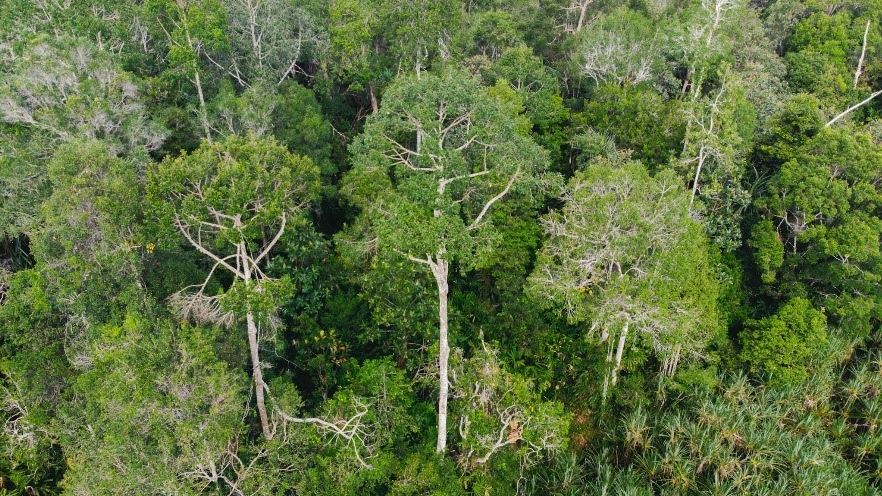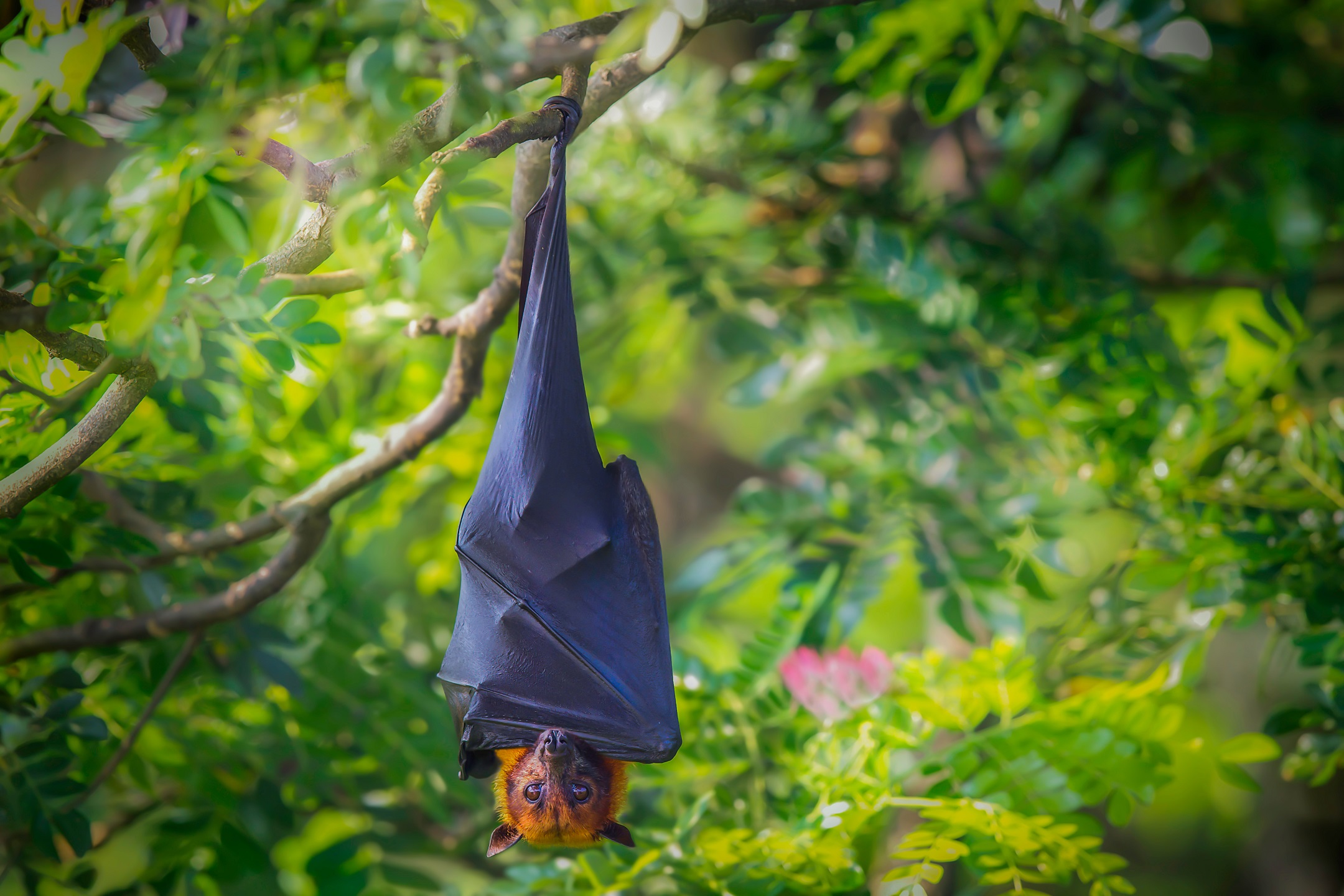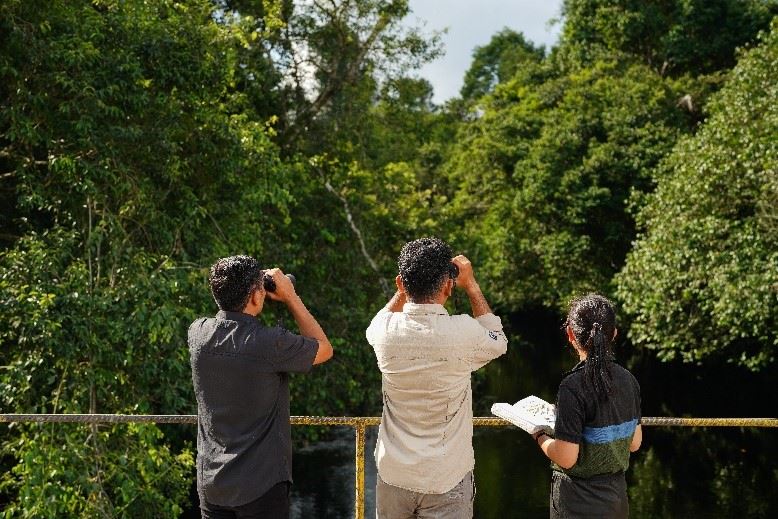October 16, 2023
The peatland forests of Restorasi Ekosistem Riau (RER) provide habitats for a diverse range of plants and animals, many of which are endangered. This makes RER a vital refuge. As wild populations decline due to habitat loss, climate change and other, predominantly anthropogenic stressors, these changes are reflected in their conservation status.
But what exactly is conservation status, and how does it correspond to the situation at ground level? How is conservation status assessed and how are animals classified? And, most importantly, how can this information support remedial efforts, particularly in places like RER? In this article, we’ll address each of these questions in turn.
What is conservation status?
Conservation status is an objective way to convey the extent to which species are threatened by extinction. One of the most commonly referenced inventories for conservation status is the IUCN Red List of Threatened Species.

Compiling biodiversity surveys from around the world, the Red List is able to track changes in wild populations, while also flagging up places and species that require urgent attention. There are many benefits to this system – changes in conservation status can help to determine conservation priorities and guide strategic interventions, while also influencing government policy and galvanizing public opinion.
How is conservation status classified?
All species can be placed into one of nine categories, which represent a spectrum of conservation status ranging from Least Concern (LC) all the way up to Critically Endangered (CE) or even Extinct (EX). An animal’s conservation status is determined by its geographic range, population size, increases or decreases in that population, and further analyses of extinction probability. The Red List is updated at various points during the year, in order to provide an accurate projection of biodiversity worldwide.
Below are the nine categories in full, along with a brief description of what they mean:
How does conservation status support conservation efforts?
Conservation status information helps everyone from governments and NGOs, to scientists, teachers, students and wildlife rangers. Data provided from sources like the IUCN Red List are invaluable to government agencies when devising policy updates, while conservation actors such as NGOs and wildlife parks use this information to inform their actions and priorities. Even the private sector pay close attention to the Red List, in an effort to better understand their environmental impact and mitigate any negative impacts on the natural world.
RER conservation status update
Conservation status updates provide an invaluable resource for the team of ecologists working at RER. Here, biodiversity monitoring is essential to restoration work and forms a key part of our daily operations – RER maintains its own taxonomic database, which is updated every six months to provide a detailed picture of flora and fauna on the ground. This includes findings on existing populations, sightings of new species, and changes to current status.

Changes to the IUCN Red List provide RER with vital information about the bigger picture beyond our borders, giving us a wider view of biodiversity in a global context. For example, the large flying fox (Pteropus vampyrus) is one species found in RER concession areas that was recently updated from Near Threatened (NT) to Endangered (EN) based on global data, meaning they are at high risk of extinction in the wild. In response, RER can now focus more attention on protecting these animals, to ensure the global population retains a vital foothold.
Other, similar examples of RER species mentioned in the latest Red List updates include the southern pig-tailed macaque (Macaca nemestrina), which was upgraded from Vulnerable (VU) to Endangered (EN); and the Malay crestless fireback (Lophura erythrophthalma), which is now listed as Critically Endangered (CR).
RER efforts to preserve threatened species
RER is home to a variety of flora and fauna, which includes many examples of protected and endangered species.

At RER, we add the latest updates from the IUCN Red List to our ongoing monitoring and data collection at the local landscape level, utilizing camera traps, surveys, research, and training – such as our recent bird banding activities – to ensure we develop a better, more complete understanding of the wildlife living in RER and a wider narrative of their conservation story. As explained by RER’s Ecology and Restoration manager, Prayitno Goenarto, “ The RER species database not only represents our collective knowledge of what species occurs on the Kampar Peninsula but also the concerted effort and commitment RER has taken towards monitoring the vast biodiversity in the area. Each species recorded in the list was only made possible through tremendous effort by those willing to traverse an unforgiving but species-rich landscape in pursuit of scientific knowledge.” Moreover these species records and their latest IUCN status may advise us on at-risk species and possible future interventions.